Air Operations, Bonin Islands 15 30th Heavy Bomb Group B-24s based at Saipan attack Ani Jima, Chichi Jima, and Haha Jima.
[  | |   ] ]
Air Operations, CBI
BURMA
- 6 10th Air Force B-25s and 19 10th Air Force P-47s attack bridges throughout northern and eastern Burma.
CHINA
- 15 308th Heavy Bomb Group B-24s attack Burma Road targets in the Chefang area. 2 B-24s attack the port area at Amoy.
- 36 341st Medium Bomb Group B-25s attack Chuanhsien and nearby targets of opportunity.
- 12 B-25s attack Lungling.
- 6 B-25s attack Kuanyang.
- 2 B-25s attack a bridge at Jinyang.
- 14th Air Force P-51s and P-40s mount more than 90 effective sorties against numerous targets across southeastern and east-central China.
- 19 7th Heavy Bomb Group B-24s transport fuel from India to Liuchow and 2 B-24s transport fuel to Kunming.
THAILAND
- 6 341st Medium Bomb Group B-25s attack a bridge at Dara.
[  | |   ] ]
Air Operations, East Indies - FEAF B-24s and B-25s attack the Mapangat and Sidate airfields on Celebes throughout the day and night.
- V Fighter Command P-47s attack the Kaoe airfield on Halmahera.
[  | |   ] ]
Air Operations, Europe
RAF BOMBER COMMAND
Daylight Ops:
- 50 aircraft of Nos. 1 and 6 Groups carry out a good attack on the Domberg coastal batteries. In the aircraft total are 34 Halifaxes, 10 Mosquitos and 6 Lancasters. One particularly large explosion is seen.
Minor Ops:
- 5 Hudsons are on Resistance operations, and there are 2 Mosquitos on Ranger patrols and 6 RCM sorties.
Evening Ops:
- 549 aircraft including 378 Lancasters, 154 Halifaxes and 17 Mosquitos of Nos. 1, 3, 4 and 8 Groups are sent to Neuss. Bomber Command reports say that most of the bombing falls in dock and factory areas.
- 5 Lancasters and 2 Halifaxes are lost.
- 136 Lancasters and 5 Mosquitos of No. 5 Group are sent to bomb the banks of the 2 parallel branches of the Dortmund-Ems canal at a point near Ladbergen, north of Münster. At this point the level of the canal water is well above the level of the surrounding land. Despite the presence of 7/10ths cloud in the target area, breaches are made in the banks of both branches of the canal and a 6-mile stretch of it is drained. Most of this damage is caused by 2 direct hits by 12,000lb Tallboy bombs dropped by aircraft of No. 617 Squadron at the opening of the raid. This raid destroys an aqueduct on the Dortmund-Ems canal and brings to a halt the shipment of prefabricated U-boat parts by this route.
- 107 Lancasters, 5 Mosquitos and 1 Lightning carry out a supporting raid on the local German night-fighter airfield just outside Münster. There is no photographic record of the damages, but reports from the ground say the area is hit by 100 high-explosive bombs without any fatal casualties.
Minor Ops:
- 38 Mosquitos are sent to Bochum and 6 to the Rheine night-fighter airfield, and there are 45 Mosquito patrols and 31 RCM sorties.
US 8th AIR FORCE
FRANCE:
- More than 150 8th Air Force B-24s transport fuel to France.
US 9th AIR FORCE
NETHERLANDS:
- IX Troop Carrier Command transports each release two gliders carrying reinforcements to the MARKET-GARDEN battle zone.
- Escort and support if provided by 519 VIII Fighter Command fighters and 40 IX Fighter Command P-38s. In engaging more than 150 Luftwaffe fighters, VIII Fighter Command pilots down 24 Luftwaffe fighters over the MARKET-GARDEN battle area and in running battles over both sides of the Dutch-German frontier between 1530 and 1745 hours.
- 15 VIII Figther Command fighters are lost with their pilots.
US 12th AIR FORCE
ITALY:
- 24 B-25s of the 12th Air Force's 340th Medium Bomb Group deliver a low-level attack against La Spezia harbor through intense anti-aircraft fire and sink the Italian light cruiser Taranto before the ship can be scuttled so as to block the entrance to the strategically important harbor. Bombing is so accurate that the ship capsizes before aircraft in the final flight elements can release their bombs.
- 12th Air Force fighter-bombers directly support the US 5th Army as it battles through the Gothic Line.
US 15th AIR FORCE
AUSTRIA:
- 15th Air Force B-17s attack a marshalling yard at Wels.
CZECHOSLOVAKIA:
- 15th Air Force B-17s attack a synthetic-oil plant at Brux.
ITALY:
- A total of 229 15th Air Force B-24s attack numerous rail bridges and viaducts throughout northern Italy.
[  | |   ] ]
Air Operations, New Guinea V Fighter Command P-40s and P-47s attack anti-aircraft batteries at the airfields at Manokwari, Moemi, and Ransiki.
[  | |   ] ]
Burma-China On the Salween front the Japanese dispatch a column with supplies for the garrison at Pingka, which the Chinese are attacking.
[  | |   ] ]
Diplomatic Relations (24th?) The tiny republic of San Marino declares war on Germany, following the capture of its 300-man army by a German platoon.
[  | |   ] ]
Eastern Front In Estonia the troops of the 3rd Baltic Front reach the Baltic at Parnu. The German Army Group North can do nor more than try to slow down the Russian advance. The Russian force in Rumania pushes on beyond Arad to the Hungarian frontier.
NORTHERN SECTOR
The 2nd Shock Army captures Parnu.
CENTRAL SECTOR
The Polish 1st Army is halted north of Magnuszew, having suffered heavy losses. The Home Army in Warsaw has abandoned Mokotow.[MORE]
[  | |   ] ]
Greece A specially picked British unit is parachuted on to Arazos, on the northwest coast of the Peloponnese, to occupy the local airfield. From here the Allies will be able to strike at the Germans as they retreat from Greece, and possibly advance and occupy Patras. The Germans have abandoned the whole of the Peloponnese 48 hours earlier and are now carrying out the evacuation of 60,000 men from Crete, as well as the small garrisons in the Aegean islands.
[  | |   ] ]
Italy 5th Army's attacks north of Florence clear the Futa Pass through the Appenines.
[  | |   ] ]
Pacific - Ulithi atoll, just north of the Palaus, is occupied by a part of the US 81st Division after a naval reconnaissance has suggested that it is not used by the Japanese. They abandoned it in August. By the end of the war it will have become one of the main bases for the American fleets.
- U-859 is about to enter the port of Penang when spotted by British submarine Trenchant. The British submarine fires 3 torpedoes and records one hit. The Trenchant then surfaces and rescues 10 of the 18 survivors. Another 8 are later rescued by a Japanese submarine.
U-859|
| Class | Type IXD/2 |
| CO |
Kapitänleutnant Johann Jebsen |
| Location |
Malacca Strait, off Penang |
| Cause |
Submarine attack |
| Casualties |
47 |
| Survivors |
18 |
- The US submarine Escolar (SS-294) departs Midway for her first war patrol. After October 17, Escolar is never heard from again. It is presumed she was lost on a Japanese mine.
- The US submarine Apogon (SS-308) sinks the Japanese guardboat No.6 Choyo Maru (74t) east of Honshu.
[  | |   ] ]
Palaus On Peleliu the 321st Inf Regt, only just arrived in the line, advances along the west coast as far as the village of Garekoru. But efforts to advance along the whole line fail in face of solid resistance of the Japanese on Mount Umurbrogol and on another position in the eastern part of the island which the Americans call 'Bloody Hill'.
On Angaur there is another raid by the US 322nd Inf into the Lake Salome area, and another withdrawal in the evening.
[  | |   ] ]
Southwest Pacific Lt-Gen Walter Krueger-s 6th Army headquarters issues the approves plan for the Leyte landing.[MORE]
[  | |  ] ]
Soviet Union, Strategy The Stavka suspends the Baltic Offensive due to poor gains, and plans to concentrate on the destruction of the 3rd Panzer Army rather than the 16th Army.
[  | |   ] ]
United States, Planning Due to the continuation of the war in Europe after the failure of MARKET GARDEN, logistics assessments by JCS planners confirm that an invasion of Formosa (Operation CAUSEWAY is not possible in 1944. Planning for CAUSEWAY was based on the assumption that the war in Europe would be over by December 1944, and both support troops and supplies would be available to support an invation. Luzon is supportable logistically with resources currently available in the Pacific and can be accomplished in 1944. US forces willo mose likely isolate and bypass Formosa and turn to the Bonin Islands and the Ryukyis instead for long-range bomber bases, which will support and eventual invasion of Japan.
[  | |   ] ]
Western Front The battles in the Arnhem area continue with no real change in fortune for either side. To the west of the British XXX Corps advance, Canadian units cross the Escaut canal in the beginning of their offensive to clear the north bank of the Scheldt.
[  | |   ] ]
Images from September 23, 1944
Dortmund-Ems Canal Breached
|
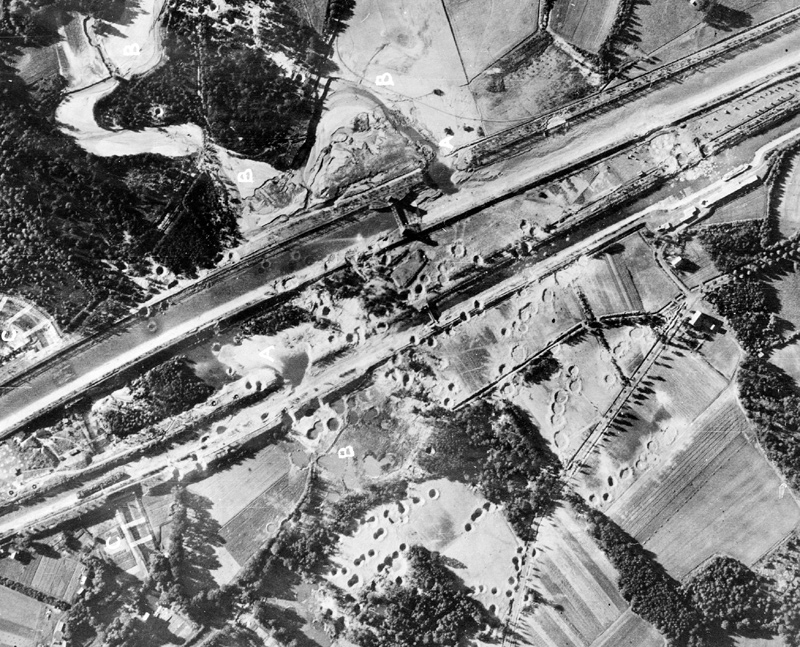 |
|
Oosterbeek Action
|
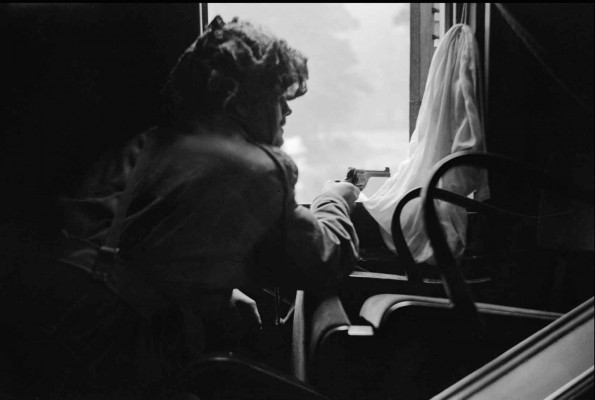 |
|
More Oosterbeek Action
|
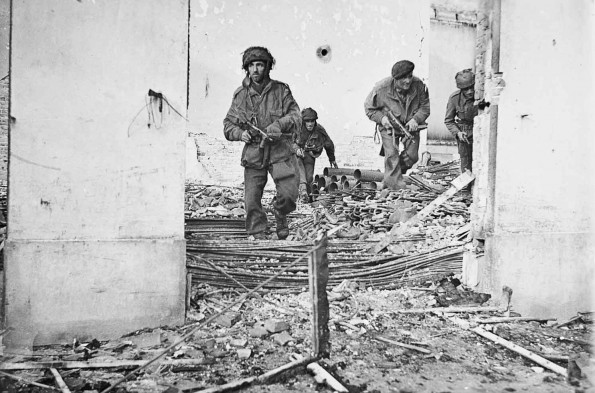 |
|
German Anti-aircraft Gun at Arnhem
|
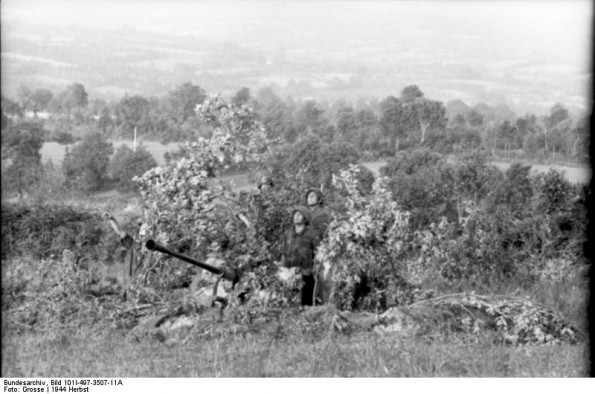 |
|
Allied Air Strike on German Column
|
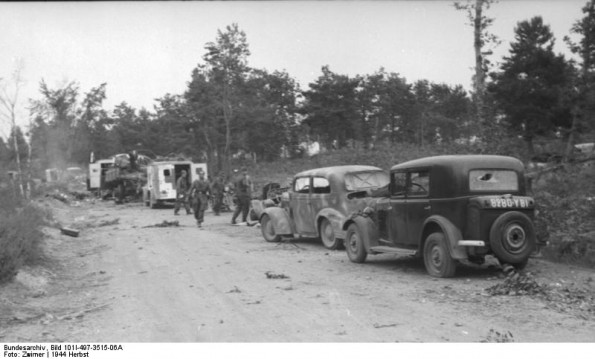 |
|
A German Casualty
|
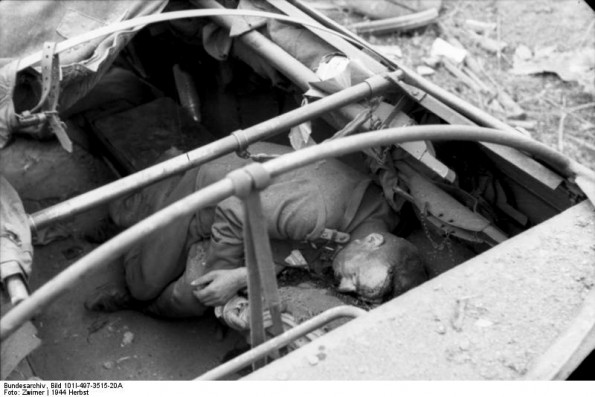 |
|
Destroyed Medical Supplies Truck
|
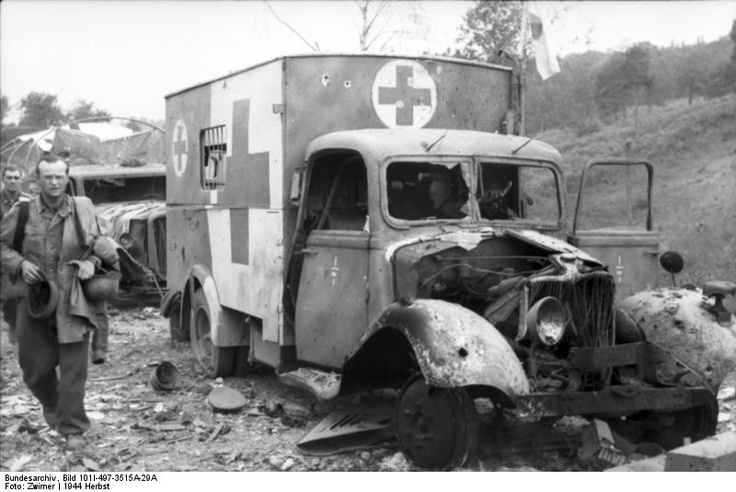 |
|
Clearing Rubble in Firenzuola
|
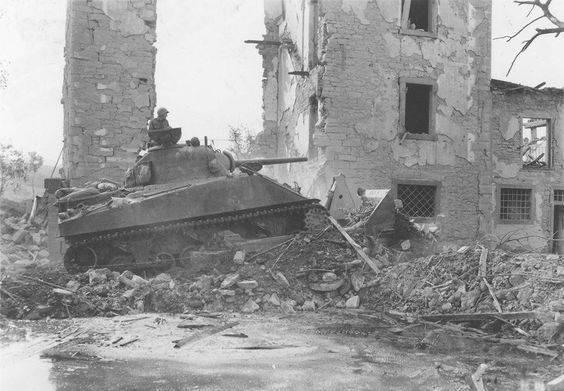 |
|
Results of Dusseldorf Bombing
|
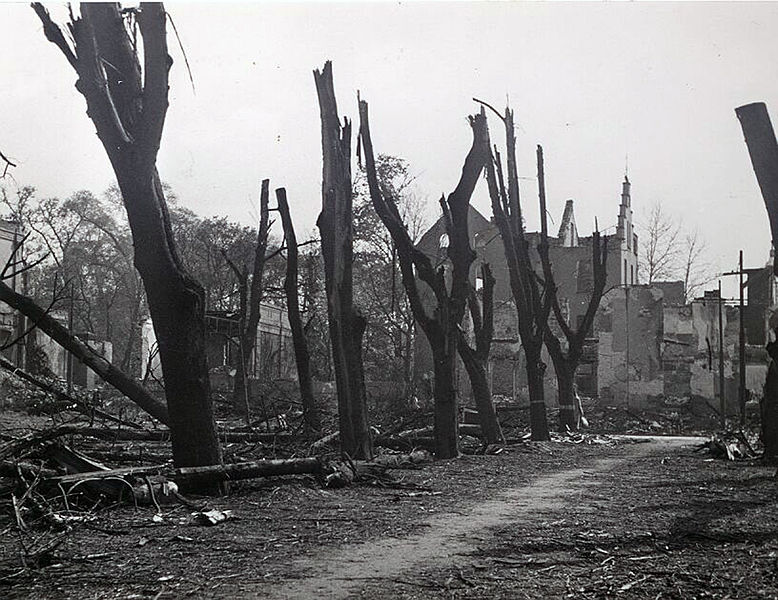 |
|
Dropping the Polish Airborne Brigade
|
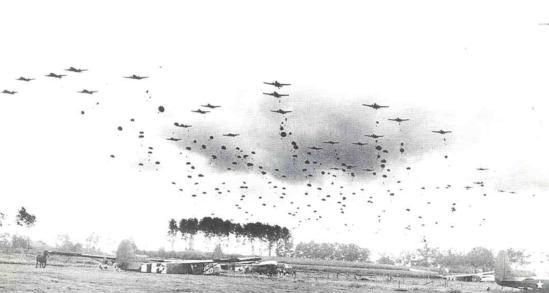 |
|
He-177 Rear Gunners Position
|
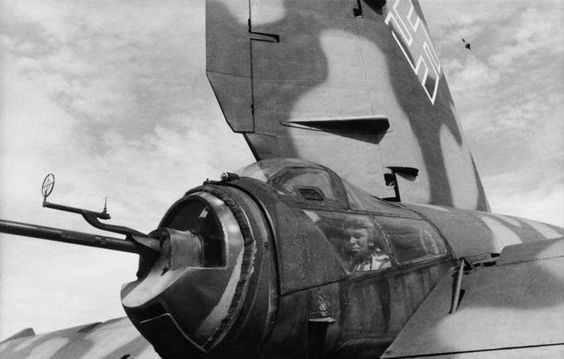 |
|
Evacuees from Arnhem
|
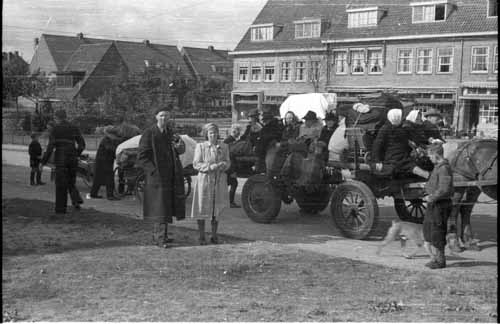 |
|
Evacuees from Arnhem
|
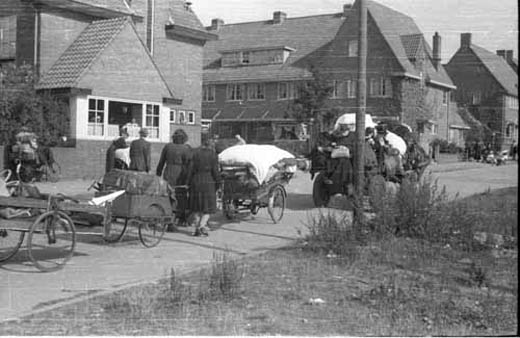 |
|












